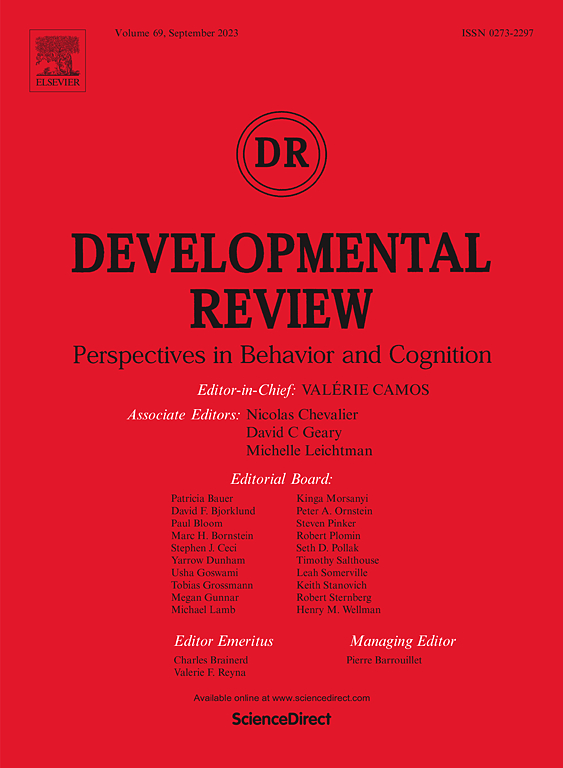Rethinking adversity and psychopathology as multidimensional constructs: identifying shared patterns of brain dysconnectivity
IF 5.6
1区 心理学
Q1 PSYCHOLOGY, DEVELOPMENTAL
引用次数: 0
Abstract
Accumulating evidence suggests that experiences of adversity interact with genetic vulnerability to shape brain development in ways that increase risk for psychopathology. However, the complexity of these interactions—and the multidimensional nature of both adversity and psychopathology symptom presentations—has made it challenging to identify consistent mechanistic pathways or patterns. This review uses conceptual framework that integrates pleiotropic genetic risk, epigenetic modifications, and neurobiological signaling pathways to provide an overview for how adversity may shape neurodevelopmental processes and alter large-scale brain network connectivity. Drawing on the triple network model and existing empirical work, the review synthesizes how specific features of adversity may map onto patterns of dysconnectivity in the salience network (SN), default mode network (DMN), and frontoparietal network (FPN). These network-level changes appear to align with transdiagnostic symptom dimensions: for instance, hypoconnectivity patterns are more commonly associated with neglect dimensions and “negative” symptoms (e.g., anhedonia, cognitive impairments), while hyperconnectivity patterns are linked to trauma dimensions and “positive” symptoms (e.g., hypervigilance, intrusive thoughts). The review concludes by highlighting the value of a multidimensional frameworks of both adversity and psychopathology to guide future research on mechanistic and transdiagnostic pathways from adversity to psychopathology, particularly work on neural networks.
重新思考逆境和精神病理学作为多维结构:识别大脑连接障碍的共同模式
越来越多的证据表明,逆境经历与遗传脆弱性相互作用,以增加精神病理风险的方式塑造大脑发育。然而,这些相互作用的复杂性,以及逆境和精神病理症状表现的多维性,使得确定一致的机制途径或模式变得具有挑战性。这篇综述使用综合了多效性遗传风险、表观遗传修饰和神经生物学信号通路的概念框架,概述了逆境如何塑造神经发育过程和改变大规模大脑网络连接。根据三重网络模型和现有的实证研究,本文综合了逆境的特定特征如何映射到突出网络(SN)、默认模式网络(DMN)和额顶叶网络(FPN)中的连接障碍模式。这些网络层面的变化似乎与跨诊断症状维度一致:例如,低连通性模式更常与忽视维度和“阴性”症状(如快感缺乏、认知障碍)相关,而高连通性模式与创伤维度和“阳性”症状(如高度警惕、侵入性思维)相关。综述最后强调了逆境和精神病理学多维框架的价值,以指导未来从逆境到精神病理学的机制和跨诊断途径的研究,特别是在神经网络方面的工作。
本文章由计算机程序翻译,如有差异,请以英文原文为准。
求助全文
约1分钟内获得全文
求助全文
来源期刊

Developmental Review
PSYCHOLOGY, DEVELOPMENTAL-
CiteScore
11.00
自引率
3.00%
发文量
27
审稿时长
51 days
期刊介绍:
Presenting research that bears on important conceptual issues in developmental psychology, Developmental Review: Perspectives in Behavior and Cognition provides child and developmental, child clinical, and educational psychologists with authoritative articles that reflect current thinking and cover significant scientific developments. The journal emphasizes human developmental processes and gives particular attention to issues relevant to child developmental psychology. The research concerns issues with important implications for the fields of pediatrics, psychiatry, and education, and increases the understanding of socialization processes.
 求助内容:
求助内容: 应助结果提醒方式:
应助结果提醒方式:


